One of the most beloved war stories ever filmed is that of HBO’s “Band of Brothers” (2001), based on Stephen Ambrose’ 1992 book by the same name. Now, the series was meticulously researched, and not only were military experts consulted on everything from uniforms to hatches to bullets, but the men of Easy Company were there virtually every step of the way.
Look carefully at the scene of Dutch liberation – Edward “Babe” Heffron, E Company veteran, has a cameo as an old man drinking wine at a table.
When Major Dick Winters died a few years ago, Tom Hanks did an interview about him after his service. He related how when initially talking to Winters, Hanks told him that in the best of movies you can hope for maybe twelve percent accuracy. In this case, we were going for seventeen, Hanks said he told the veteran officer.
When the film finally came out, most of the veterans were satisfied, but a number of them pointed out some glaring errors in memoirs they wrote after the series had been out for a time. Still, virtually all of them were satisfied that the overall result depicted their personalities, the events and the sight and sounds accurately enough.
Now, imagine if, after the preview of the first couple of episodes, Dick Winters and the other survivors of E Company had organized a press interview and said something like “We totally disavow this series – it is nothing like what we experienced, and it is a poor excuse for a film.” Virtually no one would have watched it, and the series wouldn’t have the shelf life that it has today as one of the greatest depictions of WWII ever filmed.
That is exactly what happened in 1965 when the movie “The Battle of the Bulge” was released, but instead of a major, the SUPREME ALLIED COMMANDER IN EUROPE and 34th President of the United States, Dwight D. Eisenhower came out of retirement to denounce the film as “historically inaccurate”. Eisenhower and others (veterans and critics both) criticized virtually everything about the film, from its setting to its equipment to its time-line.
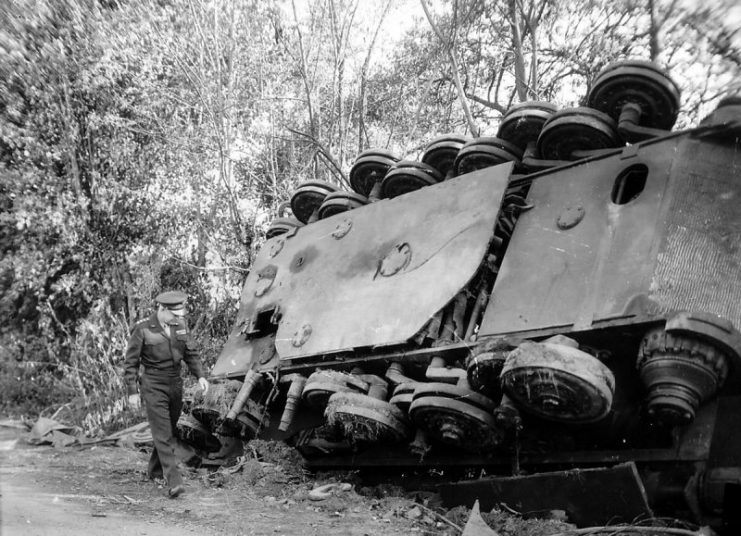
Even if you don’t know anything about WWII, the film is sub-par. Even taking into account the film making style of the time, the dialogue is stilted, the battle scenes are contrived and very obviously choreographed (there are so many men getting hit by bullets or shrapnel, stopping in their tracks with their hands to their chests or stomachs,without blood, and slowly falling to the ground. If I had a dollar for each one, I would be rich.
It’s clear that the film-makers had no conception of what actual combat was like, and what’s worse, it seems obvious that what technical advisers they did have must have been ignored on this point, if they were consulted at all.
The main technical adviser was an ex-Wehrmacht colonel, Meinrad von Lauchert, and perhaps the film reflects that, spending as much or more time on the Germans than on the Americans. In what is perhaps the best or most memorable scene in the movie, Robert Shaw, who is playing a fictional character of SS Panzer leader Jochen Peiper, leads his despondent men in a rousing version of the “Panzer Lied”, the Wehrmacht tank branches’ fight song. That scene lasts about five minutes – the film is 167 minutes long.
What are some of the inaccuracies in the film?
First, the tanks. The battle involved thousands of tanks and armored vehicles on both sides. On screen, one can’t realistically show that – especially in 1965 before CGI, but enough tanks could be on screen at one time to give the impression of strength. Problem is, most of the tanks are American M-47 Patton tanks that were not produced until…six years after WWII.
Which means, among other things, that the Germans didn’t have any, but in the film, the German “Tigers” are painted Pattons. There was not even an attempt to use wood to alter their shape. A German insignia was simply slapped on American tanks.
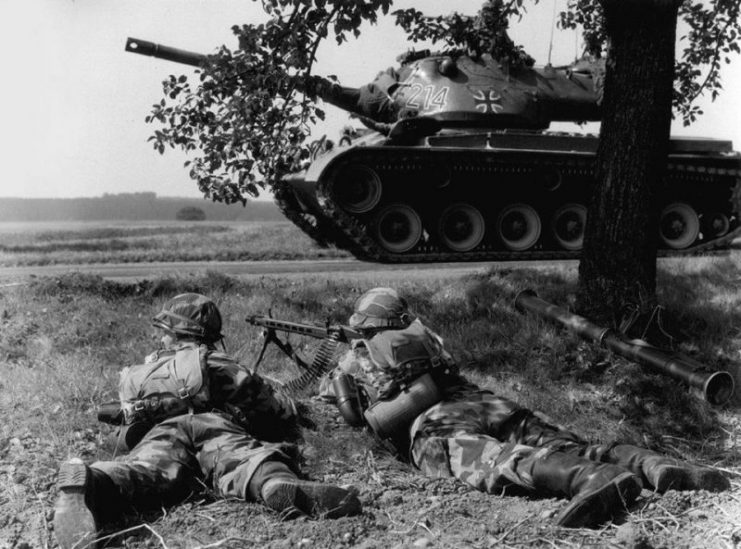
Secondly – there is virtually no snow. The movie was filmed on the plains of Spain. Of course, the Bulge was fought in December/January 1944-5, in one of the worst winters on record, so there was snow everywhere.
Not in Spain. What “snow” is on film is spray painted on the ground. Also, there are very few trees, except for a couple of scenes. The Battle of the Bulge took place entirely in the Ardennes Forest. Enough said.
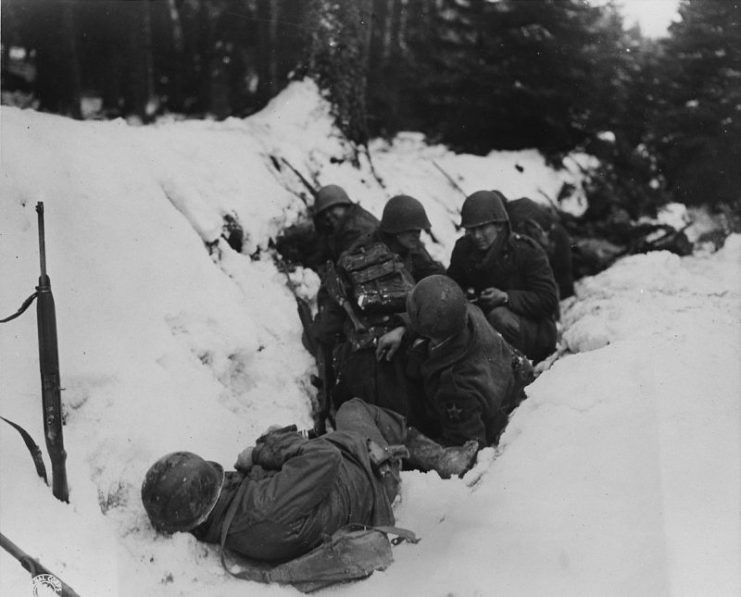
When Henry Fonda takes to the air to scout German positions, again they are in the desert looking surroundings of Spain, but “snowflakes” swirl around the plane. Furthermore, he is flying in a Cessna L-19 Bird Dog, which was not made until the 1950’s.
In the intro to the film, the narrator states that British Field Marshal Montgomery’s Eighth Army is in the north (of the Bulge) and Patton’s Third Army is to the south.
Some points: Firstly, Montgomery commanded the 21st Army Group, not just an army. Second: the Eighth Army was fighting in Italy, not northern Europe. Third, the narration implies that Patton’s Third Army was the sole US army to the south of the Bulge. Again, Third Army was just part of the total US force in northern Europe.
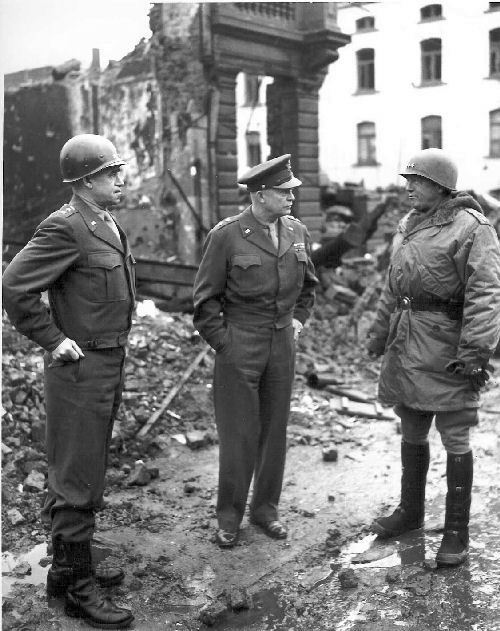
Never mentioned is the fact that Eisenhower gave command of the US forces on the north shoulder of the Bulge to Montgomery. Not a popular move among US troops at the time, but a historical fact which the film overlooks.
Towards the end of the film, the German spearhead approaches a huge US fuel depot, which Henry Fonda and others blow up in their faces. In the film, it seems that if the Germans do not capture this one particular depot, their drive is over. This was not the case.
Yes, the Germans were low on fuel, and the movie accurately depicts this, but they never had in mind one particular depot, and did not generally know where the American supplies were kept – they were hoping to overrun them in the course of the battle.
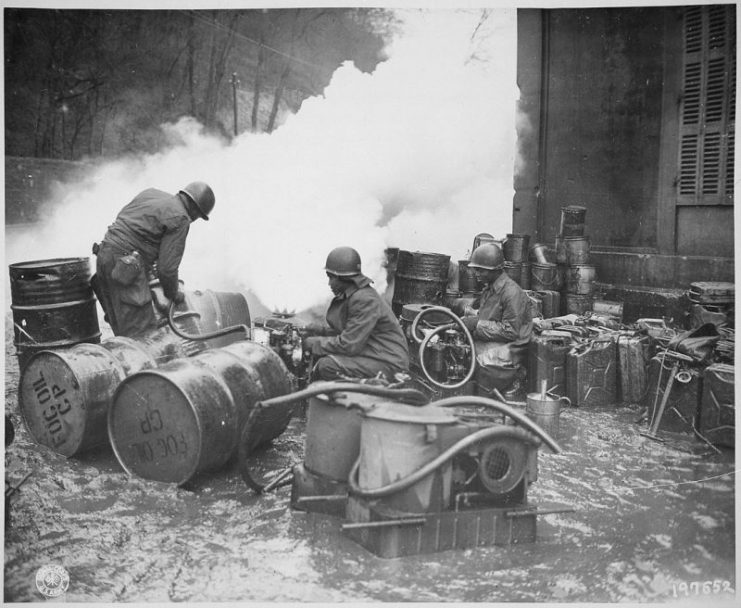
After Eisenhower’s talk, the producers of the film came out to defend it, stating that they wanted to capture the feeling of the battle, not its actual moments. Critics, while generally panning the film, agreed that it was made for younger audiences, who may not have known much about the battle twenty years later, and who wanted “action”.
Take a look for yourself, if you can stand it.
